$13,500
National average fixed price
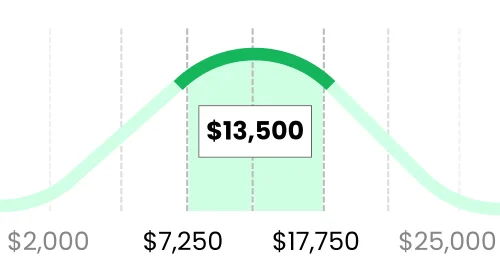
Looking for an accurate quote for your location?

Discover how we calculate average landscaping costs and select top-rated providers, ensuring you get the most accurate and reliable estimates.
Home » Cost Calculators » Landscaping Cost
Landscaping is a key component of any home’s curb appeal. A well-designed and maintained yard can transform your outdoor space into a beautiful oasis, increase your property value, and provide a space for relaxation and entertainment. But how much does landscaping cost? In this guide, we’ll explore the factors that influence landscaping costs, provide average pricing, and share tips on how to make the most of your landscaping budget.
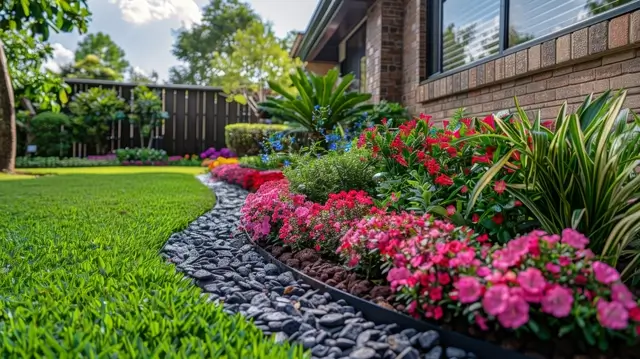
Before diving into the specifics of costs, it’s important to understand why landscaping is worth the investment. A thoughtfully landscaped yard enhances the aesthetic appeal of your home, provides a welcoming environment for outdoor activities, and can even help reduce energy costs by strategically placing trees for shade. From my own experience, investing in landscaping not only improved the look of our home but also made our outdoor space a favorite spot for family gatherings and weekend relaxation.
The cost of landscaping can vary widely depending on several factors. Understanding these can help you plan your project and budget effectively.
The overall scope of your landscaping project is one of the biggest factors influencing the cost. Are you looking for a simple lawn makeover, or are you planning a complete outdoor renovation with hardscaping, lighting, and irrigation systems?
The size of your yard is a major factor in landscaping costs. Larger yards require more materials, plants, and labor, which can significantly increase the overall cost.
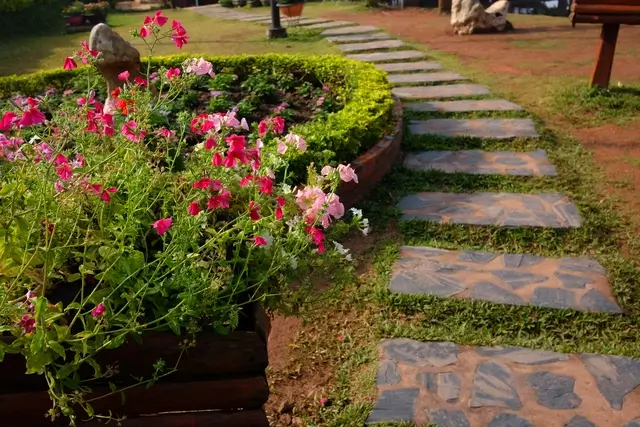
The type of materials and plants you choose for your landscaping project will greatly influence the cost. High-end materials like natural stone, mature trees, and custom-built features will increase your budget.
Labor is a significant component of landscaping costs. The complexity of the project, the skills required, and your location all affect labor rates.
If your project involves a custom design, you may need to hire a landscape designer or architect. Design and planning costs can add $1,000 to $5,000 to your overall budget, depending on the complexity of the project.
Choose low-maintenance plants and materials to reduce ongoing costs for watering, pruning, and repairs, saving you time and money in the long run.
To give you a better idea of what to expect, here’s a breakdown of average landscaping costs for various types of projects:
Basic lawn care services, including mowing, fertilizing, and weed control, typically cost between $50 and $200 per visit. For ongoing maintenance, homeowners might spend $1,000 to $3,000 per year.
Adding a patio or deck is a popular landscaping project that can significantly enhance your outdoor space. The average cost ranges from $2,000 to $10,000, depending on the size, materials, and complexity.
Planting trees and shrubs can add beauty and privacy to your yard. The cost to plant a tree generally ranges from $150 to $1,500, depending on the size and type. Shrubs typically cost $25 to $100 each.
Hardscaping projects, such as building retaining walls, walkways, or outdoor kitchens, are more labor-intensive and can be quite expensive. Costs for hardscaping typically range from $5,000 to $25,000 or more.
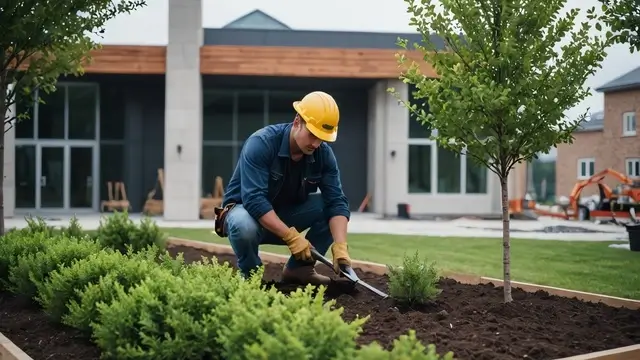
Landscaping can be a significant investment, but there are ways to manage costs without sacrificing quality:
If your dream landscape is out of budget, consider planning your project in phases. Start with the most critical elements, like planting trees or installing a patio, and add other features over time as your budget allows.
I took this approach with my own yard. We started by installing a basic lawn and garden beds, then added a patio and outdoor lighting the following year. It allowed us to spread out the costs and still achieve the look we wanted.
Opting for native plants can save you money on both the initial cost and long-term maintenance. Native plants are better adapted to your local climate, requiring less water, fertilizer, and care.
If you’re handy and enjoy working outdoors, consider doing some of the landscaping work yourself. Tasks like planting, mulching, and even building simple garden beds can be DIY projects, reducing labor costs.
Before hiring a landscaper, it’s wise to get quotes from at least three different companies. This allows you to compare prices and services, ensuring you get the best deal for your project.



Selecting the right landscaper is crucial to the success of your project. Here’s what to consider when making your choice:
Ensure the landscaper is licensed, insured, and bonded. This protects you in case of accidents or damage during the project.
Look for landscapers with positive reviews and a good reputation in your area. Online reviews and testimonials can provide insight into the quality of their work and customer service.
Don’t hesitate to ask for references from past clients. A reputable landscaper should be willing to share examples of their work and put you in touch with satisfied customers.
Before starting your project, request a detailed estimate that includes labor, materials, and any additional costs. This helps prevent surprises when it comes time to pay the bill.
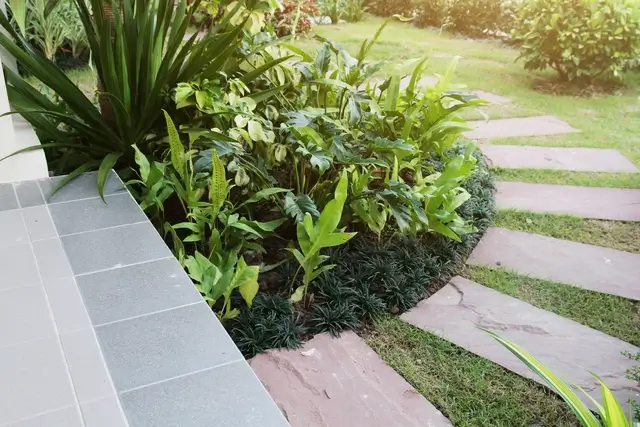
Absolutely. While landscaping can be a significant investment, the benefits are well worth it. A beautifully landscaped yard enhances your home’s curb appeal, increases its value, and provides a space for you to enjoy year-round.
From my own experience, the investment we made in landscaping our yard has paid off in countless ways. Not only does our outdoor space look amazing, but it’s also become a gathering place for friends and family, adding immeasurable value to our home life.
If you’re considering a landscaping project, take the time to plan carefully, set a realistic budget, and choose a landscaper you can trust. With the right approach, you can create an outdoor space that you’ll love for years to come.
The cost of landscaping can vary widely depending on the scope of the project, the size of your yard, and the materials used. On average, basic landscaping projects might cost between $1,000 and $5,000, while more extensive projects involving hardscaping, irrigation systems, and custom features can range from $10,000 to $50,000 or more.
Several factors influence the cost of landscaping, including the size of your yard, the complexity of the project, the materials and plants chosen, labor costs, and whether you require design services. Location can also play a role, as labor rates and material costs vary by region.
Yes, doing landscaping in phases can be more cost-effective. By spreading out the work over time, you can manage your budget more easily and prioritize the most important elements first. This approach also allows you to make adjustments as the project progresses.
The cost to install a patio or deck varies based on the size, materials, and complexity. On average, you can expect to pay between $2,000 and $10,000 for a patio or deck. High-end materials like natural stone or custom woodwork will increase the cost.
To landscape your yard cost-effectively, focus on using native plants that require less water and maintenance, plan the project in phases, and consider doing some of the labor yourself, such as planting or mulching. Getting multiple quotes from landscapers can also help you find the best price.
Annual lawn care and maintenance costs typically range from $1,000 to $3,000 depending on the size of your lawn and the services required, such as mowing, fertilizing, and weed control. Regular maintenance helps keep your yard looking its best and can prevent more costly issues down the line.
A landscape designer or architect can be valuable if you’re planning a large or complex project. Their expertise ensures that the design is both functional and aesthetically pleasing. Design services can add $1,000 to $5,000 to your project, depending on the complexity.
To reduce water costs, consider installing a drip irrigation system, which uses water more efficiently by delivering it directly to the roots of your plants. Choosing drought-tolerant and native plants can also minimize the need for watering.
When hiring a landscaper, check their credentials, including licensing, insurance, and experience. Read online reviews, ask for references, and get a detailed estimate that outlines all costs. It’s also important to discuss your vision and ensure they understand your goals for the project.
To increase your home’s value with landscaping, focus on curb appeal by enhancing the front yard, adding outdoor living spaces like patios or decks, and using quality materials. Well-maintained landscaping not only makes your home more attractive but can also boost its market value.
No results available
Reset© 2024 All Rights Reserved
Thank you! We’ve received your request and are working on finding you the best deals in your area. We’ll connect you with top-rated local businesses shortly!